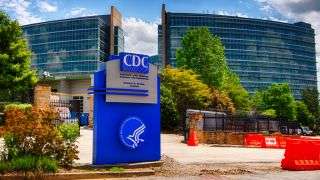
The U.S. Department of Health and Human Services (HHS) issued new orders for hospitals to send COVID-19 data straight to the agency, rather than to the Centers for Disease Control and Prevention (CDC), which typically compiles the information.
The orders, posted to the HHS website, direct hospitals to send daily reports about their total number of COVID-19 patients, admissions and related deaths from the previous day, along with data on their ICU bed occupancy, ventilators in use, staffing shortages and supply of personal protective equipment (PPE), among other information. Previously, the CDC collected and shared such data on publicly accessible databases.
“The new, faster and complete data system is what our nation needs to defeat the coronavirus,” Michael R. Caputo, an HHS spokesman, told The New York Times. “The CDC, an operating division of HHS, will certainly participate in this streamlined all-of-government response. They will simply no longer control it.” The order goes into effect Wednesday (July 15).
But some health experts have raised concerns that the change will limit the amount of data available to the public, including to scientists and health officials, at a time when COVID-19 cases continue to surge in many states.
“Only the CDC has the expertise to collect data,” Rep. Donna E. Shalala of Florida, who served as health secretary under former President Bill Clinton, told the Times. “I think any move to take responsibility away from the people who have the expertise is politicizing.”
The Infectious Diseases Society of America (IDSA), a national organization of physicians, scientists and public health experts, echoed similar sentiments in a statement written by the organization’s president, Dr. Thomas File, Jr.
“Placing medical data collection outside of the leadership of public health experts could severely weaken the quality and availability of data, add an additional burden to already overwhelmed hospitals and add a new challenge to the U.S. pandemic response,” File wrote.
Dr. Janis Orlowski, chief health care officer of the Association of American Medical Colleges, participated in meetings leading up to the new HHS order. During the meetings, held between hospital administrators and White House coronavirus response coordinator Dr. Deborah Birx, there had been “a verbal discussion” about making the data accessible to the public, or at least to hospitals through the HHS, Orlowski told the Times. She called the order “a sincere effort to streamline and improve data collection.”
The new database, managed by a health data firm called TeleTracking, will rely on hospital administrators to manually enter data — similar to the CDC’s National Healthcare Safety Network, which collected COVID-19 information until the new order went into effect on Wednesday. This method of manual entry is burdensome, experts said.
“The whole thing needs to be scrapped and started anew, ” Dr. Dan Hanfling, an expert in medical and disaster preparedness and a vice president at In-Q-Tel, a nonprofit strategic investment firm focused on national security, told The New York Times. The HHS could establish an electronic system to automatically gather data from hospitals; it plans to eventually move away “from a manual entry process and toward an automated one to ultimately reduce the burden on data collection,” according to the agency’s statement.
“It is laughable that this administration can’t find the wherewithal to bring 21st-century technologies in data management to the fight,” Hanfling said.
Rather than switch to the new HHS database, “the administration should provide funding to support data collection and should strengthen the role of CDC to collect and report COVID-19 data by race and ethnicity, hospital and ICU capacity, total number of tests and percent positive, hospitalizations and deaths,” File wrote in the IDSA statement.
Representatives of hospitals agree that, so far, the process of sending data to the CDC has been cumbersome and could use improvement. Rush University Medical Center in Chicago needed four full-time employees on hand to send COVID-19 data to four different agencies, Dr. Bala N. Hota, the hospital’s chief analytics officer, told The New York Times. The reports included more than 100 different data points that helped determine what resources the hospital would receive from the federal government.
What’s more, the CDC’s reporting requirements have been in flux throughout the pandemic.
“It has been an administrative hassle and confusing to constantly be shifting gears on reporting while hospitals are on the front lines during a pandemic,” Carrie Williams, a spokesperson for the Texas Hospital Association, told the Times.
Related Content
—11 (sometimes) deadly diseases that hopped across species
—14 Coronavirus myths busted by science
—The 12 deadliest viruses on Earth
But despite the clear flaws in data collection, “the CDC is the right agency to be at the forefront of collecting the data,” Hota told the Times. The CDC’s methods of sharing public data have also been flawed at times; for example, in May, the agency admitted to lumping positive diagnostic test and antibody test results together, a decision that clouded the nation’s true testing rates, as well as skewing the rate of new infections, Live Science previously reported.
“Trust and accountability and transparency — all three go together,” Will Humble, the executive director of the Arizona Public Health Association, told the Times. As the federal government begins curating the new HHS database, “they’d better keep it transparent, or else people are going to think that it was an ulterior motive,” he said.
Originally published on Live Science.
Sourse: www.livescience.com





